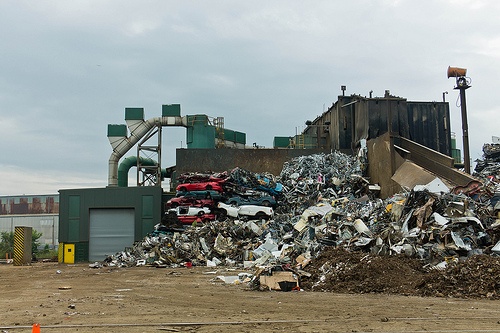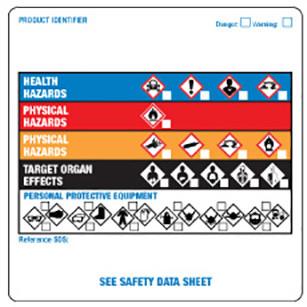As entrepreneurs commercialize “nanomaterials”, occupational safety and health (OSH) agencies and professionals are developing standards to evaluate and manage the associated hazards. These protective efforts cover the full range of OSH agency efforts. The easiest step is to expand application of the Employer’s General Duty to protect workers against workplace hazards to cover nanomaterials –easiest since this Clause requires employers to take steps against “recognized” hazards, and do not bind the agencies to promulgate specific standards (I’ve written about the General Duty Clause here, and about recommendations for comprehensive safety and health programs here). At the other extreme, the Occupational Safety and Health Administration (OSHA) or other OSH agencies can issue enforceable OSH standards –so far there are none exclusively addressed to nanomaterials, although some materials do trigger some standards (see below). Between these extremes, agencies can and do offer non-mandatory but detailed guidelines for some hazards – the National Institute for Occupational Safety and Health (NIOSH) just issued such a guide for nanomaterials, building on similar publications by other agencies. The rest of this blog discusses the new NIOSH guide, “Building a Safety Program to Protect the Nanotechnology Workforce: A Guide for Small to Medium-Sized Enterprises” (NIOSH Guide), and references some of resources used to produce them.
Read MoreAudit, Compliance and Risk Blog
Tags: Employer Best Practices, Health & Safety, OSHA, Employee Rights, EPA
On October 18, the Occupational Safety and Health Administration (OSHA) issued “Recommended Practices for Safety and Health Programs” (Recommendations) – which revises its 1989 “Safety and Health Program Management Guidelines” (S&H Guidelines). As the name indicates, these recommendations suggest activities employers should undertake to ensure their employees’ safety and health. They are not regulations or other requirements, but the 1989 Guidelines have long been used by agency inspectors and onsite S&H personnel as generally applicable roadmaps to safer workplaces. This month’s revision end a review process that included a proposal and request for comments published in November 2015 (I blogged about the proposal here).
Read MoreTags: Employer Best Practices, Health & Safety, OSHA, Employee Rights
OSHA Proposes Technical Changes To Dozens Of Requirements
Posted by Jon Elliott on Tue, Nov 08, 2016
The Occupational Safety and Health Administration (OSHA) has proposed to update and/or clarify dozens of provisions in its regulatory standards, within its General Industry, Construction, and Shipbuilding Standards, as the latest round in an ongoing “Standards Improvement Project.” The proposals were published in the October 4 edition of the Federal Register, and comments are due by December 5. Depending on the comments (and perhaps on the outcome of the Presidential election), OSHA plans to finalize changes early in 2017.
Read MoreTags: Employer Best Practices, Health & Safety, OSHA, Employee Rights
U.S. Commission on Civil Rights Criticizes EPA’s Environmental Justice Efforts
Posted by Jon Elliott on Tue, Oct 18, 2016
In September 2016, the U.S. Commission on Civil Rights (Commission) issued its annual “Statutory Enforcement Report for 2016”; this year’s topic is the Environmental Protection Agency’s (EPA’s) efforts to protect and promote “Environmental Justice.” The Commission reviews decades of EPA efforts, and criticizes longstanding inadequacies.
Read MoreTags: Health & Safety, Environmental risks, Environmental, EPA, ghg, Hazcom, RCRA
EPA Establishes Formaldehyde Limits For Composite Wood Products
Posted by Jon Elliott on Tue, Aug 30, 2016
EPA has just issued final rules to limit exposure to formaldehyde emissions from plywood and other laminated and composite wood products. The Formaldehyde Emission Standards for Composite Wood Products Act of 2010 (“the Act”, which is codified as Title VI of the Toxic Substances Control Act (“TSCA”)) required EPA to develop these rules. The Act responded to evidence of dangerous emissions from substandard construction products, publicized particularly by health hazards in temporary trailers provided by the Federal Emergency Management Agency (FEMA) to victims of Hurricane Katrina and other natural disasters. The Act established standards based on California rules, and directed EPA to issue nationwide rules by January 1, 2013 to enforce these standards. EPA missed its deadline, but has just announced rules that will become effective after publication in the Federal Register (probably in August 2016).
Read MoreTags: Health & Safety, Environmental risks, Environmental, EHS, EPA, Hazcom
Think Drinking Water Issues Only Exist in Places like Brazil?
Posted by Jane Dunne on Thu, Aug 18, 2016
We often see pictures in the media of places where the environment is being abused. During the Rio Olympics, we’ve seen many visual images of garbage-laden rivers and dirty beaches and it’s easy to think that if that were in our country, it would be under control, but a recent Harvard study took a closer look at water quality at home and found that it comes up short in many U.S. states.
Read MoreTags: Health & Safety, Environmental risks, Environmental, EHS, Canadian
Applying A Hierarchy of Controls to Increase Workplace Safety
Posted by Jon Elliott on Tue, Jun 28, 2016
Every workplace poses at least some potential hazards to workers, but every set of hazards is unique. To effectively identify and manage those hazards, an organization should apply logical and systematic approaches. A number of related approaches are available. A few months ago I blogged about a proposal by the Occupational Safety and Health Administration (OSHA) to revise the Safety and Health Program Management Guidelines it promulgated back in 1989 (click here) – comments were due in February and OSHA is considering what to do next. OSHA’s proposal focused on overall program design, so included important structural considerations – who’s in charge, how are expectations communicated, etc.
Read MoreTags: Employer Best Practices, Health & Safety, OSHA, Employee Rights, EHS
Paris Agreement On Climate Change Calls For Action By Non-National Entities
Posted by Jon Elliott on Tue, Jun 21, 2016
Last December, representatives of 195 countries agreed to continue to expand global efforts to combat climate change. The new Paris Agreement breaks a longstanding impasse with a clever mixture of multinational agreements and agreements-to-agree. I summarized its provisions (and the history of the United Nations Framework Convention on Climate Change (Framework Convention) it modifies) here.
Read MoreTags: Health & Safety, EHS, Greenhouse Gas, ghg, climate change, global
OSHA Requiring Employers to Submit Injury and Illness information
Posted by Jon Elliott on Tue, Jun 14, 2016
The Occupational Safety and Health Administration (OSHA) requires most employers to prepare and maintain records of occupational injuries and illnesses as they occur (I&I Logs). OSHA also requires employers to post an annual I&I Summary in each “establishment” within their workplaces by February 1, summarizing that workplace’s I&Is during the previous calendar year. Delegated state-run programs impose comparable requirements. (I summarized these requirements here). Most of this information remains with employers and their employees, so it never gets used for analyses of workplace trends or to help OSHA evaluate areas where additional regulations might be most helpful.
Tags: Employer Best Practices, Health & Safety, OSHA, Employee Rights
Most of the laws and regulations discussed in these blogs exist to ensure proper management of hazardous chemicals and products, in ways designed to minimize environmental and human exposures. Pesticide management provides important variations on these themes, since pesticides are used for the very purpose of killing targeted organisms in the environment … and are regulated to target those uses to protect humans and other non-target species. Within the United States, the Federal Insecticide, Fungicide and Rodenticide Act (FIFRA) provides the national framework for regulation of pesticides, including registration of active ingredients and mixtures, licensing of applicators, and requirements for the application and use of these hazardous materials. FIFRA provides the U.S. Environmental Protection Agency (EPA) with overall responsibility, although different elements of pesticide regulation are subject to different balances of federal (EPA) and state control.
Read MoreTags: Health & Safety, OSHA, EHS, EPA, Hazcom










